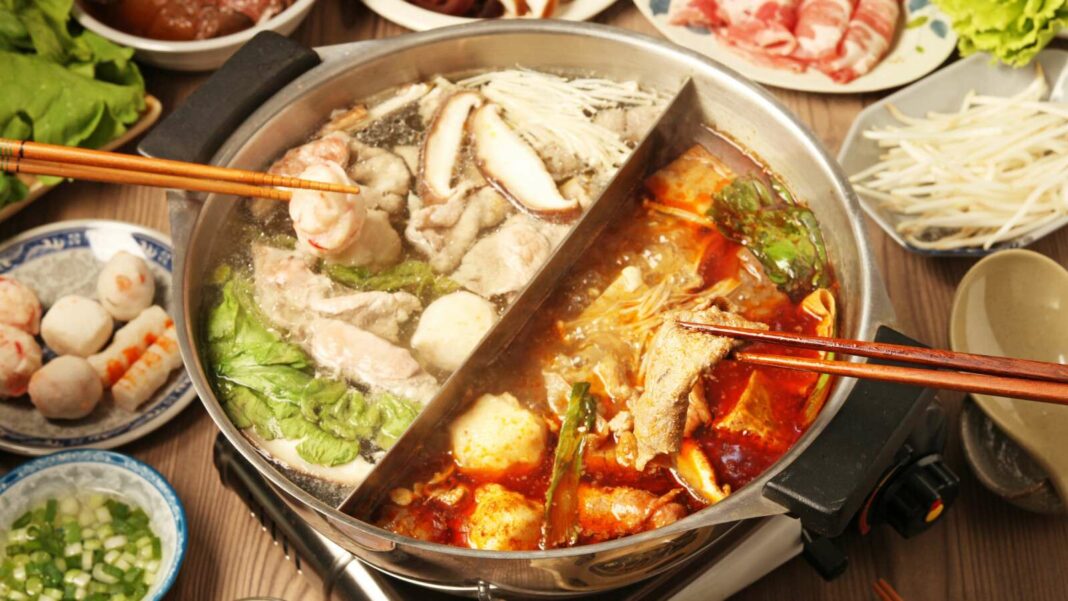During festive gatherings, Hot Pot offers a delightful alternative to traditional dishes like fondue. This interactive Chinese meal, featuring a simmering broth and a variety of ingredients, fosters connection and enjoyment. While fondue pots can be used, investing in a dedicated Hot Pot ensures a better experience. Consider factors like material, size, heat source, and additional features when choosing one. With options available for different budgets, Hot Pot can enhance memorable culinary experiences with loved ones.
During the festive seasons of Christmas and New Year’s Eve, we cherish moments with family and close friends, and what better way to enhance these gatherings than with delightful food? Traditional choices like raclette and fondue create a wonderful communal dining atmosphere, but this year, consider trying something different: Hot Pot. This beloved Chinese dish presents a fresh alternative to the classic fondue, provided you have the right pot for the job.
In major Asian cities, Hot Pot has emerged as a trendy dining experience, capturing the hearts of food enthusiasts worldwide. Young urbanites particularly enjoy this interactive meal that fosters connection and fun. While many Asian restaurants offer Hot Pot, you can easily recreate this enjoyable experience in your own home. Read on to discover the best equipment to make it happen.
Understanding Hot Pot
Hot Pot, or ‘Huo Guo’, boasts a rich history in China, having been enjoyed for centuries. The concept is straightforward: a rich broth simmers in a large pot, allowing diners to add an array of ingredients such as meat, fish, tofu, vegetables, and mushrooms. Once cooked, everyone can gather around and serve themselves. This communal dish echoes fondue but is a healthier alternative without the indulgent fats or cheeses.
Can I Use a Fondue Pot for Hot Pot?
While it’s possible to use a standard fondue pot for Hot Pot, these pots are typically smaller and shaped differently, limiting the number of ingredients you can include. For optimal results, electric models crafted from stainless steel are recommended, as they ensure even heat distribution. However, a fondue pot lacks the capability to prepare dual broths simultaneously. Therefore, investing in a specialized Hot Pot is worthwhile, especially for larger gatherings or for an authentic dining experience.
Choosing the Right Hot Pot
For those in search of a Hot Pot, the options are plentiful, varying in size, material, and features. Here’s what to consider when making your purchase.
Material Matters
Hot Pots are predominantly made from stainless steel, cast iron, ceramic, or aluminum, each providing unique benefits. Stainless steel is a strong, easy-to-clean, and heat-resistant option, making it a solid choice for durability.
Cast iron, known for its excellent heat retention, can be used over an open flame but requires careful maintenance to avoid rust.
Ceramic offers traditional charm and superb heat retention, but it is sensitive to extreme temperature changes and cannot be used to boil the broth beforehand.
Aluminum is usually the most budget-friendly choice, although it may not last as long as stainless steel or cast iron. Its lightweight nature makes it suitable for easy transport.
Sizing Up Your Hot Pot
When selecting a Hot Pot, consider how many people you plan to serve. Most models cater to either two to four or six to eight diners. Opting for a larger model allows you to prepare less broth for smaller gatherings, while a compact option is ideal if storage space is limited.
Heat Source Options
Modern Hot Pots typically operate on electricity, allowing you to prepare the broth directly in the unit and place it at the center of your dining table. In contrast, traditional models may use charcoal, which is less suitable for indoor dining.
If you have a portable gas stove or a single hot plate, you might prefer a pot without an integrated heat source. In this case, you would prepare the broth on the stove and then transfer it to the table. However, this method is generally less safe than using an electric Hot Pot.
Extra Features to Consider
Whether you prefer a spicy kick or a milder flavor, many Hot Pots offer dual compartments for cooking two types of broth simultaneously, ensuring everyone’s taste is accommodated.
Additionally, some electric Hot Pot models include an integrated grill, similar to a raclette setup. While traditional Hot Pot is usually just a single pot with broth, certain Asian variations from Japan or Korea incorporate grilling, allowing for meat preparation alongside the broth.
Cleaning Made Easy
The easiest Hot Pots to clean feature removable components that are often dishwasher safe. For cast iron models, cleaning depends on the coating: enamel-coated pots can go in the dishwasher, while untreated cast iron requires hand washing.
Electric Hot Pots vary in design; some are a single piece and must be cleaned by hand, while others allow for a removable cooking container that can be conveniently washed in the dishwasher.
Essential Accessories
To safely retrieve cooked ingredients from the hot broth, you’ll need either classic fondue forks or, for a more authentic experience, chopsticks. While chopsticks may pose a challenge, they enhance the cultural experience of Hot Pot.
You might also want a ladle or sieve to scoop larger quantities from the broth without burning your fingers.
Hot Pots don’t require all ingredients to be submerged directly into the broth; steaming inserts can be used to prepare delicacies like dim sum. Some models come with these accessories, while others provide only the basics.
If you opt for a traditional Hot Pot, remember that the heat source is often sold separately, so be prepared to acquire suitable fuel, whether it be gas, charcoal, or fuel paste.
Understanding the Price Range
Basic electric Hot Pots can be found in the range of 30 to 50 euros, while higher-quality options typically cost between 60 and 100 euros. Luxury combination models featuring an integrated grill often exceed 100 euros.
Embarking on your Hot Pot journey can be budget-friendly and offers a fantastic opportunity to create unforgettable culinary experiences with family and friends.
